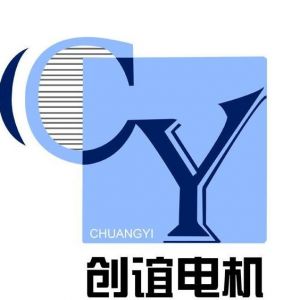How a Stepper Motor works and its types?
Posted by czcymotor on May 29th, 2021
The stepper motors is an electromechanical device that converts electric power into mechanical power. The full rotation of the electric motors increases the number of steps. The small stepper motor engine utilizes the hypothesis of activity for magnets to make the engine shaft turn an exact distance when a beat of power is given. The stator has eight posts, and the rotor has six shafts. The rotor will require 24 beats of power to move the 24 stages to make one complete unrest. Another approach to say this is that the rotor will move absolutely 15° for each beat of power that the engine gets.
 The stepper engine can be constrained by invigorating each stator individually. So the stator will polarize and works like an electromagnetic shaft that utilizes appalling energy on the rotor to push ahead. The stator's option polarizing just as demagnetizing will move the rotor bit by bit &allows it to turn through extraordinary control.
The stepper engine can be constrained by invigorating each stator individually. So the stator will polarize and works like an electromagnetic shaft that utilizes appalling energy on the rotor to push ahead. The stator's option polarizing just as demagnetizing will move the rotor bit by bit &allows it to turn through extraordinary control.
The stepper engine working rule is Electro-Magnetism. It incorporates a rotor that is made with a perpetual magnet though a stator is with electromagnets. When the inventory is given to the twisting of the stator then the attractive field will be created inside the stator. Presently rotor in the engine will begin to move with the pivoting attractive field of the stator. So this is the basic working guideline of this engine and stepper motor of different types such as Nema 17 Stepper motor, and Nema 23 stepper motor.
Construction Types of stepper motor
In construction, there are three types of stepper motors such as
● Permanent Magnet Stepper.
● Variable Reluctance Stepper.
● Hybrid stepper motor.
The Permanent Magnet stepper has a perpetual magnet rotor which is driven by the stator’s windings. They make inverse extremity shafts contrasted with the posts of the rotor which impels the rotor.
In the following sort, the Variable Reluctant stepper engine utilizes a non-polarized delicate iron rotor. The rotor has teeth that are balanced from the stator and as we dynamic, the windings in a specific request the rotor moves separately so it has the least prattle between the stator and the teeth of the rotor
In this engine, there is a delicate iron that is encased through the electromagnetic stators. The posts of the stator just as the rotor don't rely upon the sort of stepper. When the stators of this engine are empowered then the rotor will pivot to fix up itself with the stator in any case goes to have a minimal hole through the stator. Along these lines, the stators are enacted in an arrangement to spin the stepper engine.
Driving Techniques
Stepper engine driving methods can be conceivable for certain unique circuits because of their perplexing plan. There are a few techniques to drive this engine; some of them are examined underneath by taking an illustration of a four-stage stepper engine.
Single Excitation Mode
The fundamental strategy for driving a stepper engine is a solitary excitation mode. It is an old strategy and not utilized much at present yet one needs to think about this procedure. In this method, each stage in any case stator close to one another will be set off individually then again with an uncommon circuit. This will charge and demagnetize the stator to push the rotor ahead.


 The stepper engine can be constrained by invigorating each stator individually. So the stator will polarize and works like an electromagnetic shaft that utilizes appalling energy on the rotor to push ahead. The stator's option polarizing just as demagnetizing will move the rotor bit by bit &allows it to turn through extraordinary control.
The stepper engine can be constrained by invigorating each stator individually. So the stator will polarize and works like an electromagnetic shaft that utilizes appalling energy on the rotor to push ahead. The stator's option polarizing just as demagnetizing will move the rotor bit by bit &allows it to turn through extraordinary control. 